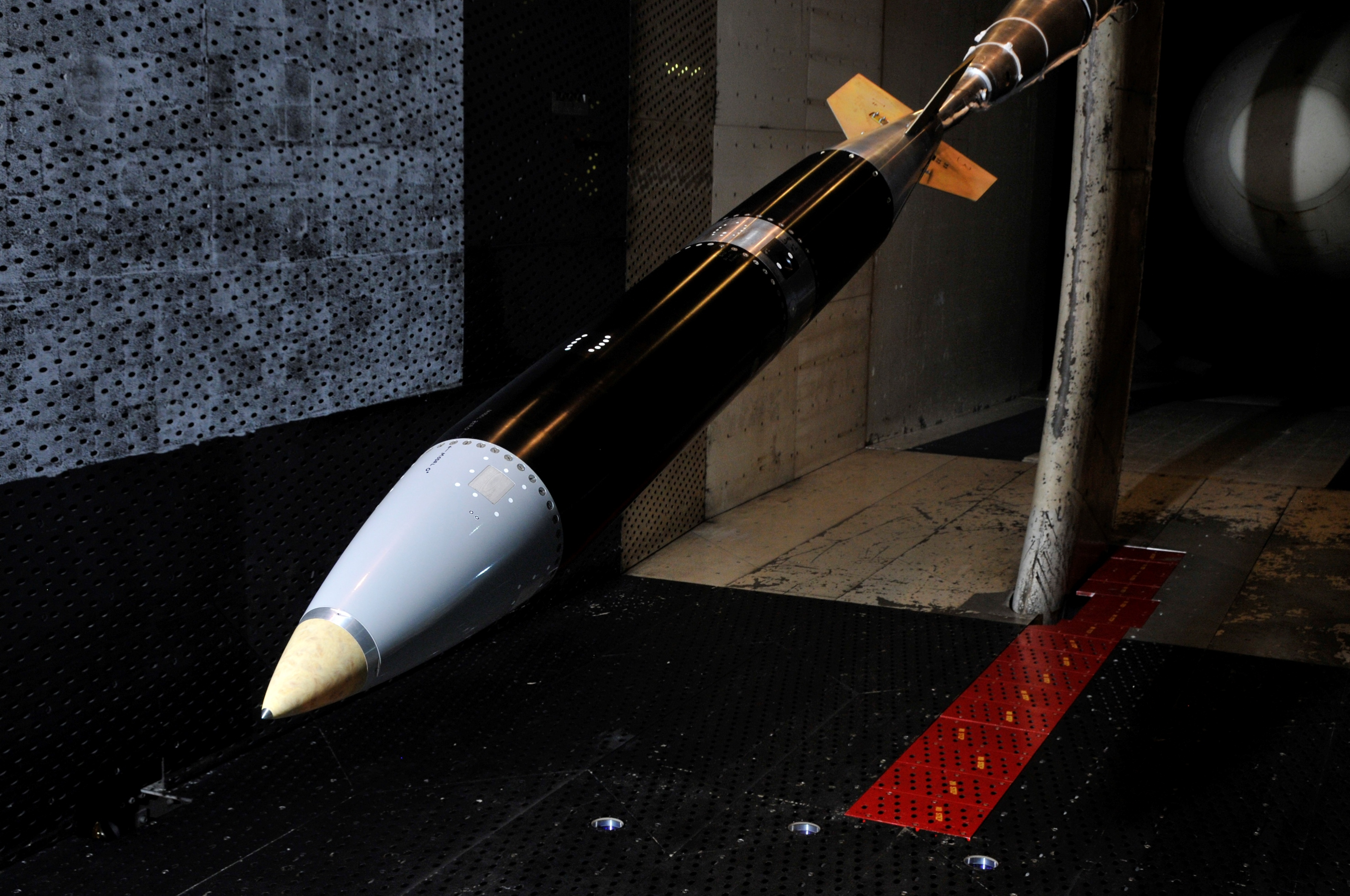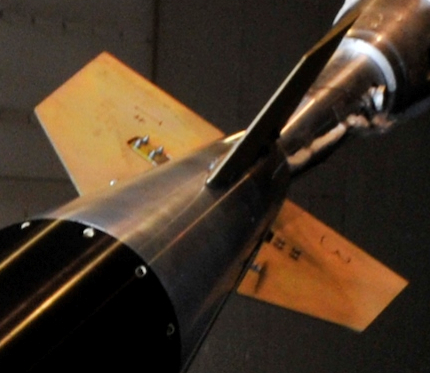
Click on image to download high-resolution version.
By Hans M. Kristensen
Additional design details of the new B61-12 guided standoff nuclear bomb are emerging with new images. The image above shows a full-scale B61-12 model hanging in a wind tunnel at Arnold Air Force Base.
The test “uncovered a previously uncharacterized physical phenomenon,” according to Sandia National Laboratories, that would affect weapons performance.
Apparently a reference to the interaction between weapons spin rocket motors and the new guided tail kit assembly. Existing B61 models do not have the guided tail kit and are less accurate than the B61-12.
The spin rocket motors were previously developed to stabilize the aerodynamic behavior of B61 bombs during descent. Previous wind tunnel tests of those weapons had revealed a so-called “counter torque” effect where plumes from the rocket motors worked against the fin performance, counteracting the torque from the motors and reducing the vehicle spin rate.

The B61-12 will use spin rocket motors similar to those on the B61-11, designed to improve stability during descent.
Because the B61-12 will be enhanced with a new guided tail kit to improve its accuracy, the wind tunnel test was necessary to determine how the new tail interacts with the spin rocket motors.
The wind tunnel image also shows the new guided tail kit in greater detail than seen before, including the four maneuverable fins that are controlled by an Internal Navigation System. In addition to improving accuracy, the fins also give the B61-12 a limited standoff capability. Current B61 versions do not have Internal Navigation System or standoff capability.

The new guided tail kit assembly is clearly visible on this image, slightly enhanced to sharpen features. The spike extending from the rear of the bomb is not part of the design but the arm that holds the bomb in place in the wind tunnel.
The NNSA budget request for FY2015 includes $643 million for development of the B61-12, which is expected to cost $8 billion to $10 billion to develop and produce. Two B61 hydrodynamic shots were conducted in 2013. The Air Force budget request includes nearly $200 million for development of the guided tail kit, estimated at more than $1 billion. Several hundred millions more are required to integrate the B61-12 on five different aircraft, including Belgian, Dutch, German, Italian and Turkish fighter-bombers. An estimated 480 B61-12 bombs are planned, with first production unit in 2020.
The B61-12 will also be integrated on the new F-35A Lightning II aircraft by 2025. The combination of the guided standoff B61-12 with the stealthy fifth-generation F-35A fighter-bomber will significantly improve the military capabilities of NATO’s nuclear posture in Europe.
This publication was made possible by a grant from the Ploughshares Fund. The statements made and views expressed are solely the responsibility of the author.
While it is reasonable for governments to keep the most sensitive aspects of nuclear policies secret, the rights of their citizens to have access to general knowledge about these issues is equally valid so they may know about the consequences to themselves and their country.
Nearly one year after the Pentagon certified the Sentinel intercontinental ballistic missile program to continue after it incurred critical cost and schedule overruns, the new nuclear missile could once again be in trouble.
“The era of reductions in the number of nuclear weapons in the world, which had lasted since the end of the cold war, is coming to an end”
Without information, without factual information, you can’t act. You can’t relate to the world you live in. And so it’s super important for us to be able to monitor what’s happening around the world, analyze the material, and translate it into something that different audiences can understand.